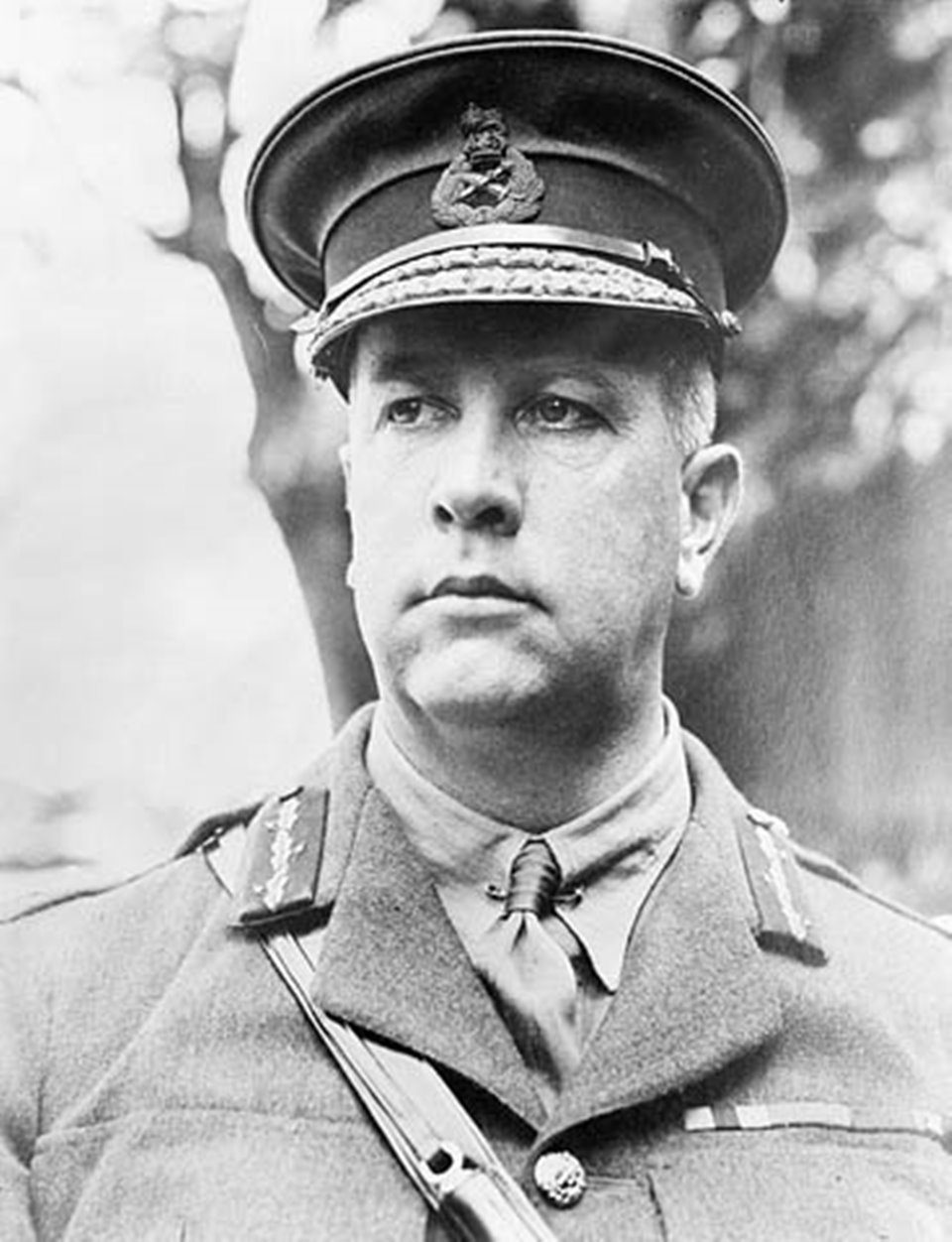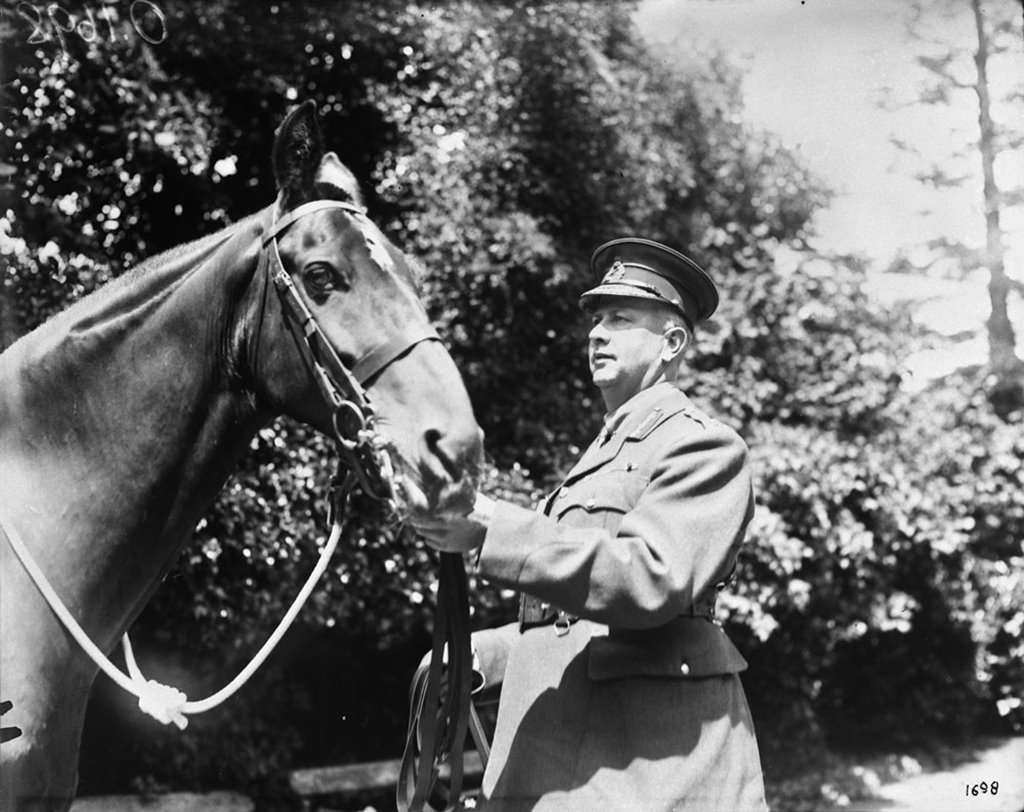Byng and Currie
Commanders in the First World War are often thought to have been heartless and incompetent “butchers” and “donkeys,” sending millions of men to gruesome and unnecessary deaths on the battlefield. In some cases, this harsh indictment of the military leadership is rightly deserved. Not so in the case of the man who led the Canadian assault on Vimy Ridge, Lieutenant-General the Honourable Sir Julian Byng, or the Canadian man who would eventually replace him, Sir Arthur Currie.
Sir Julian Byng
Byng was a British aristocrat with an intense gaze, but was known for being approachable and had a cheery personality. Byng’s military career began in 1883. Prior to the First World War, he served in India, Sudan, South Africa, and Egypt. Byng distinguished himself during the First World War when he was deployed to the Dardanelles, where he played a key role in the evacuation of troops after the disastrous Battle of Gallipoli.
In May of 1916, Byng became commander of the Canadian Corps. Upon being congratulated on this promotion, he responded:
Facts
- Byng was the 12th Governor General of Canada, serving from 1921-1926.
- Byng was a lover of hockey and fan of the Ottawa Senators. The NHL’s Lady Byng Memorial Trophy for sportsmanship is named after his wife.
- Byng was known as “Bungo” to his friends and even the British King, George V. He got this nickname at school because his older brothers were known as “Byngo” and “Bango.”
- Byng was an avid banjo player who entertained fellow officers and troops early in his military career.
- While Governor General, Byng was involved in what came to be known as the “King-Byng Affair” (1926) when Byng refused to dissolve parliament to prevent a vote of non-confidence against Prime Minister Mackenzie King.
Despite his initial hesitation, Byng meshed well with the Canadians and grew to love and respect them. The feeling was mutual; Canadian soldiers even referred to themselves as “Byng’s Boys.” The troops flourished under his leadership and developed into a world-class fighting force. Although Byng was involved in many notable battles during his military career, he chose the title “Lord Byng of Vimy” when he was knighted following the War.
Sir Arthur Currie
Sir Arthur Currie rose from humble beginnings in Strathroy, Ontario to become one of Canada’s finest generals. Prior to the First World War, Currie was a militia officer with relatively little military experience. Early in the War he was given command of a brigade that helped hold the line in the Second Battle of Ypres
In 1915 he was promoted to commander of Canada’s First Division which was his rank during the Battle of Vimy Ridge. Shortly after Vimy, Currie replaced Byng as head of the Canadian Corps when Byng was promoted to commander of Britain’s Third Army. Currie was the first Canadian to hold this post. Under his command, Canadians were successful in each of the battles they participated in until the end of the War.
For a 4 minute biography of Currie, please watch the following video:
Though Currie was not a particularly charismatic leader and did not endear himself to the troops on a personal level, he was widely respected for his success on the battlefield and sincere concern for the welfare of the men under his command. A thoughtful observer who studied and took to heart the lessons learned in prior battles, Currie understood the realities of trench warfare. He was a proponent of “bite and hold” offensives and placed heavy emphasis on pre-battle training and preparation.
Facts
- Currie’s nickname was “Guts and Gaiters.”
- Before the war, Currie was a teacher for several years before going on to work in finance and real estate.
- In 1914, Currie got in trouble financially by using regimental money to cover his private debt. Years later he paid the money back with the help of wealthy supporters.
- Like many leaders and decision makers, Currie made enemies who harshly and publicly criticized him. In 1927 he successfully sued a newspaper for libel.
- Currie Barracks in Calgary is one of many Canadian places named after the General.
- After the war, Currie became Principal of McGill University in Montreal.
- To see Currie’s attestation paper and Currie in the news, click on the stars below
Unit Home
Gearing Up: Vimy Battlefield. Wasteland and Ruins. Open Cemetery. War in the Air.
Preparing for Battle
Added Training. Models. Creeping Barrage. Capt. George McKean VC.






